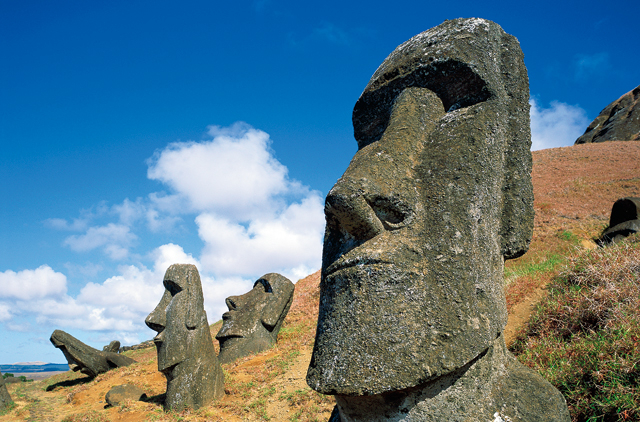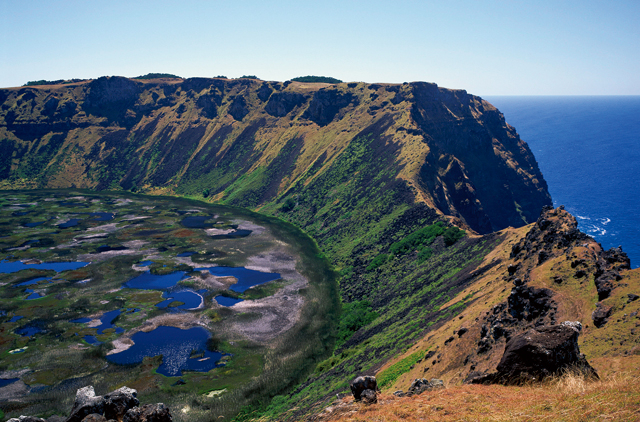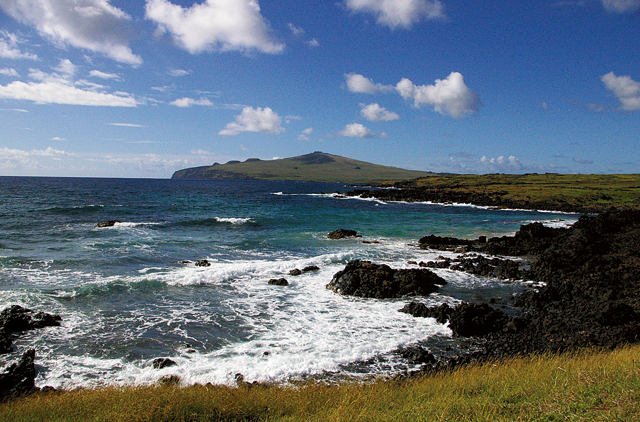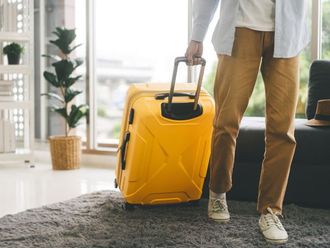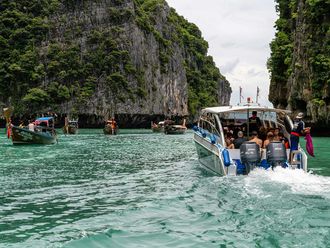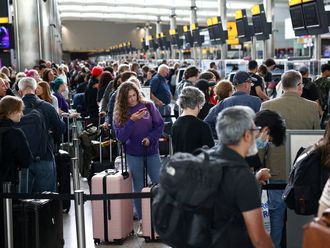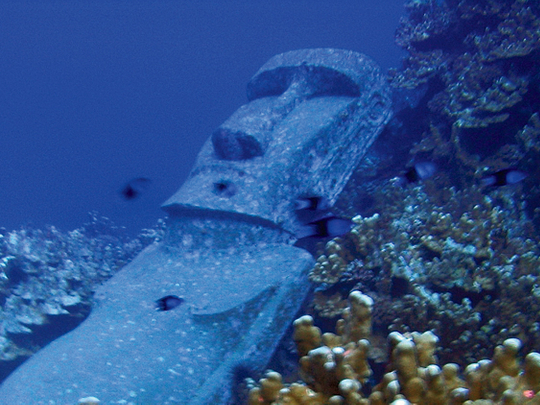
About half the size of the Isle of Wight and over 3,500km from the mainland - greater than the distance between Abu Dhabi and Athens - Easter Island, or Rapa Nui to give it its proper name, is a likely entry on most people's must-see list. Made famous by the enormous stone statues called moai that were carved from volcanic rock over 1,300 years ago, it has the same mystical magnetism that radiates from Stonehenge. These giant, granite guardians stand overthe island, seemingly safeguardingits inhabitants.
The small, almost equilaterally shaped island has a rich history. More than 1,000 years ago, Polynesian explorers crossed vast distances across the South Pacific and found their way to this tiny, remote place. Eventually, the island was ‘discovered' by the Dutch on Easter Sunday in 1722. After centuries of slavery and exploitation, it's now considered to be part of Chile and the native culture is finally returning.
The population itself numbers under 4,500 and is roughly divided into two: native Rapa Nui and those who have left behind the big city lifestyle of places like Santiago and chosen a back-to-basics existence on this peaceful volcanic plateau. The only pocket of civilisation is a little town - the only town - called Hanga Roa. Here the locals go about their daily business at a very languid pace, catching up on a little grocery shopping or perhaps making their weekly connection to the rest of the world in one of the few establishments with an internet connection. In fact, most of the day-to-day activities you'll see are geared in some way towards the tourist industry, with many visitors sauntering around town or gathering at the quaint harbour to take in the breathtaking coastline from aboard a boat or underwater.
Only during February does Rapa Nui feel a little too full. This is the time of the Tapati Rapa Nui, a two week-long festival that includes a spectacular series of traditional music, dance, cultural and sports events around the island and is the most popular attraction on the annual tourist calendar.
However, all that will soon pale in comparison with an imminent event not long after. On July 11 this year, Rapa Nui will suddenly be cloaked in darkness as a solar eclipse passes overhead. This hasn't happened on the island since 591 AD - before the first moai statues appeared. A week-long total solar eclipse festival of tribal and cosmic arts called the Honu Festival is planned, as well as a number of events and celebrations that are not just limited to Hanga Roa, but take place all over the island.
It will be spectacular, there's no doubt about that, even hypnotic, as the celestial ballet we are such a small part of unfolds in the skies above our humble planet. However, the potential onslaught of cosmic crusaders will be somewhat restricted by the flight from Santiago to Rapa Nui: the little LAN Airbus A318-100 that lands at Isla de Pasqua airport only holds 120 passengers and only flies between four and seven times a week, depending on the season. Thus many thousands will be prevented from descending on the island simply asa result of non-availability of seats.
Granted, the solar eclipse is an isolated incident, but the numbers visiting Rapa Nui each year are steadily increasing. Built to service this growing industry, the Explora Hotel is currently the largest on the island. It was completed a few years ago solely from local materials such as volcanic rock and black pine on a piece of land that's inappropriate for agriculture and has no archaeological remains. It also boasts Leadership in Energy and Environmental Design (LEED) certification from the US Green Building Council.
It might not be the cheapest hotel you've stayed at with rates starting at around Dh8,500 per person for a three-day minimum stay, but it will certainly be the most memorable. Not only is the interior design stunning, but every one of the 30 organic-themed bedrooms has a magnificent ocean view. Rates are also inclusive of all meals, all drinks, morning and afternoon organised excursions and airport transfers.
The tours provided by the Explora are probably the best way to see the island as these prevent any potential headaches of trying to arrange something upon arrival. You'll be accompanied by a native Rapa Nui tour guide who is armed with an infinite knowledge of the island and its history and is able to answer any questions you care to ask. Comfortable walking shoes are essential as the tours consist of a series of day-long hikes to see the spectacular sights on the island.
The main tours include the Rano Kau crater - the largest of the three volcanoes that formed Rapa Nui. Around a kilometre and a half across with a fresh water lake at its centre, it has grassy slopes scattered with hundreds of abandoned moai. The Ahu Tongariki is the largest of all the moai platforms. Some of the colossal statues were restored after a tsunami struck way back in 1960. The Ahu Nau Nau is on the picturesque Anakena beach where four of the seven restored figures have what are called Pukao topknots or head-dresses, which were added to give an even greater sense of grandiose to the giant, stern-faced statues.
A host of other activities over and above those organised by Explora are on offer. Some visitors hire a car or a four-wheel drive but, frankly, it really isn't necessary - the best of the island is only accessible by hiking and a small number of taxis roaming the streets of Hanga Roa at night provide a more-than-adequate service.
Several diving centres provide trips out to select spots with beautiful coral reefs. All levels of experience are catered for, from beginners to those who might have their PADI certification. One of the more established centres is the Mike Rapu Diving Centre, and the owner is somewhat of a celebrity on the island. Not only is he one of the most successful and respected native Rapa Nui businessmen, but he also held the South American record for free diving for a number of years.
The Explora won't be the biggest hotel on the island for much longer. It'll soon be dwarfed by another hotel being constructed on the cliff top overlooking both the town and a piece of the coastline where the waves crash spectacularly against the rocky cliffs. The Hangaroa Eco Village and Spa is, as the names suggests, a self-contained settlement as opposed to a conventional hotel. There are several restaurants, a pool, museum, spa, boutique, movie theatre, and 75 rooms within the complex. Not due for completion until the end of the year, this too will receive LEED certification and the tourist board is keen to highlight the fact that much of the energy used will come from turbines and solar panels. All hotel cuisine will feature indigenous ingredients and the locals will make up the majority of the staff.
The Rapa Nui people are extremely passionate about their island and their heritage. Many put on evening performances for small groups of tourists at select venues, proudly demonstrating their traditional rituals and culture over a customary dinner cooked using ancient methods.
It's imperative to take in at least one show during your trip. One of the best is called Te Ra'ai at a restaurant called Etnico Rapa Nui. Performances here are staged only three times a week, but a chance to watch the Hoko tribal war dance, which is understandably similar to its Maori equivalent, should not be missed.
There are a number of places to eat in town and all the food is supplied locally. The large establishments will take credit cards, but don't expect the smaller places to do so. The accepted local currency is the US dollar and the Chilean peso. There are a couple of ATMs in town. Fish features prominently on the menu, given that the waters around the island are home to more than 100 species.
Visitors should not expect much in the way of nightlife as Hanga Roa winds down quite early.
Try to avoid including a Sunday in your visit if you're panning a short trip as no tours run on this day and nothing will be open.
Getting there from the UAE is no mean feat - it is one of the most remote inhabited islands on Earth after all! With stopovers, you're looking at potentially 30-plushours of travelling.
The principal destination to aim for is the capital city of Santiago in Chile, and there are a few different ways to get there.
The quickest route will not be the cheapest - quite the opposite. The most likely inexpensive way is to go through Europe, typically Frankfurt, then Dallas Fort Worth, then on to Santiago. However, Emirates flies regular ultra-long haul flights from Dubai to São Paulo. From there you could transfer to Santiago and travel on to Rapa Nui itself.
THE MYSTERIOUS MOAI
The moai are massive, monolithic human figures carved from volcanic rock between 1250 and 1500AD. They represent living faces (aringa ora) of deified ancestors (aringa ora ata tepuna) and most still stand near Rano Raraku, the main moai quarry. However, many were transported - using means that are debated even today - and set on giant stone platforms called "ahu" around the island's perimeter. The statues still stood, safeguarding the lands of the particular clan that had erected them, when the first Europeans arrived on the island, but almost all would be later pulled down during conflicts between clans.


